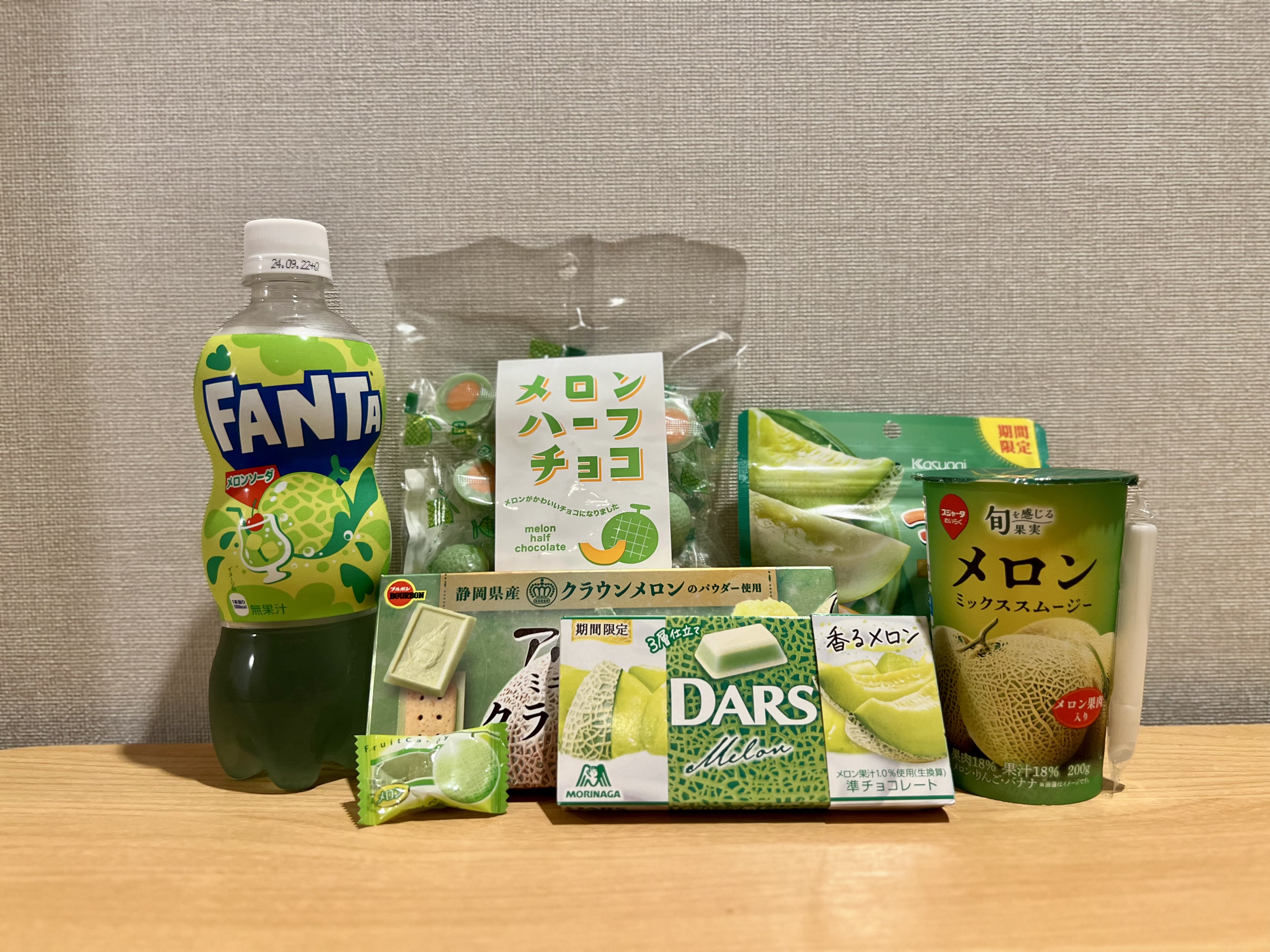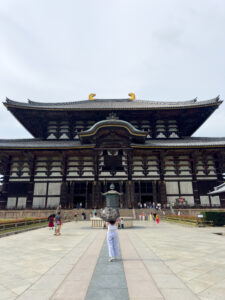
Twisting open a bottle of vibrantly green melon soda, the sweet fresh fruit scent hits me before I even take a sip.
This isn’t your average soda: It’s a sensory invitation to delve into the world of Japan’s melon obsession.
Step into any Japanese convenience store, and you’ll be greeted by a wave of green. Candy shelves overflow with gummy melons, hard candies boasting “melon cream” flavors, and even melon-shaped chocolates. It’s not just a trend; melon has reigned supreme in Japanese sweets and drinks for decades.
But why this particular fruit?
This obsession can be traced back to around the beginnings of the Edo Period (1603) when melons were first introduced to Japan, likely through trade routes with China. These early melons were probably watermelons with their refreshing nature making them a welcome addition because of the Japanese climate.
Fast forward centuries, and by the Taishō era (1912 to 1926), records indicate the presence of muskmelons, which may have arrived through trade with Europe. Unlike watermelons, muskmelons were initially a luxury enjoyed by the wealthy due to the challenges of cultivation. This exclusivity likely contributed to the fruit’s association with prestige and desirability, paving the way for its future popularity.
The rise of Yubari King melons in the late 20th century solidified melon’s connection to luxury in Japan. These fastidiously cultivated cantaloupes from Hokkaido, known for their perfect spherical shape, flawless netting, and impossibly sweet flesh, became a prized possession.
Yubari melons are not just delicious; they are a status symbol. Gifting a Yubari melon conveys immense respect and can fetch astronomical prices at auction, sometimes reaching into thousands of dollars. This exclusivity not only underscores the melon’s superior quality but also injects a sense of prestige into the act of consuming them, further solidifying melon’s place at the forefront of Japanese luxury confections.
But melon’s appeal extends far beyond the realm of luxury. In Japan, melons are heavily associated with summer and the colorful festivals that come alive during these hot months. Their cool, refreshing flesh is a perfect antidote to the scorching sun, offering a delightful burst of sweetness that perfectly complements the festive atmosphere.
Visually, melons themselves are a feast for the eyes. Their bright green exterior, often with a contrasting webbed pattern, pops against the summer backdrop. The round shape, a symbol of completeness and prosperity in Japanese culture, adds to their celebratory air. Slicing open a chilled melon becomes a centerpiece at summer gatherings, its perfectly symmetrical interior a testament to the beauty and bounty of the season.
Following the festive tradition, I embarked on my own Japanese melon odyssey. First up was Fanta Melon Cream Soda. The strikingly green liquid fizzed invitingly, releasing a wave of honeydew sweetness that tickled my nose. Each bubbly sip was a burst of summer sunshine, the creamy vanilla mingling with the juicy melon for a light and refreshing experience.
Next, I unwrapped a DARS melon chocolate. This unassuming white and green layered cube held a delightful surprise. The smooth white chocolate yielded to a burst of creamy melon, the sweet and milky flavors harmonizing perfectly.
The Tsubu Premium Melon Gummy was a revelation in texture. These weren’t your average gummies. Each chewy piece had a firm, almost jelly bean-like bite, followed by a slow release of intense melon flavor. Out of all of them, these were my favorite.
The cutely shaped chocolate melon halves weren’t my favorite because the artificial melon essence clashed with the white chocolate, leaving me reaching for the Fanta to cleanse my palate. It was a valiant effort at marrying fruit and chocolate but ultimately fell short of the other delightful discoveries on my melon-flavored adventure.
Savoring these melon treats wasn’t just about indulging my sweet tooth. It was a delightful exploration of a flavor deeply woven into the fabric of Japanese culture. Each candy and drink, with its unique textural and taste experience, offered a window into the multifaceted appeal of melon in Japan.
The effervescent Fanta echoed the joyous energy of summer festivals, while the luxurious DARS chocolate mirrored the reverence for melons as a symbol of prestige. Even the playful Tsubu gummies, with their intense honeydew flavor, captured the essence of seasonal refreshment. These candies and drinks were like tiny ambassadors of Japanese tradition, each bite or sip a reminder of the deep connection between melon and the cultural touchstones of the Land of the Rising Sun.
So, the next time you encounter a melon-flavored candy or drink, take a moment to appreciate the journey it represents. It’s more than just a flavor; it’s a taste of history, a celebration of summer and a testament to the enduring love affair between Japan and this seemingly simple fruit.







